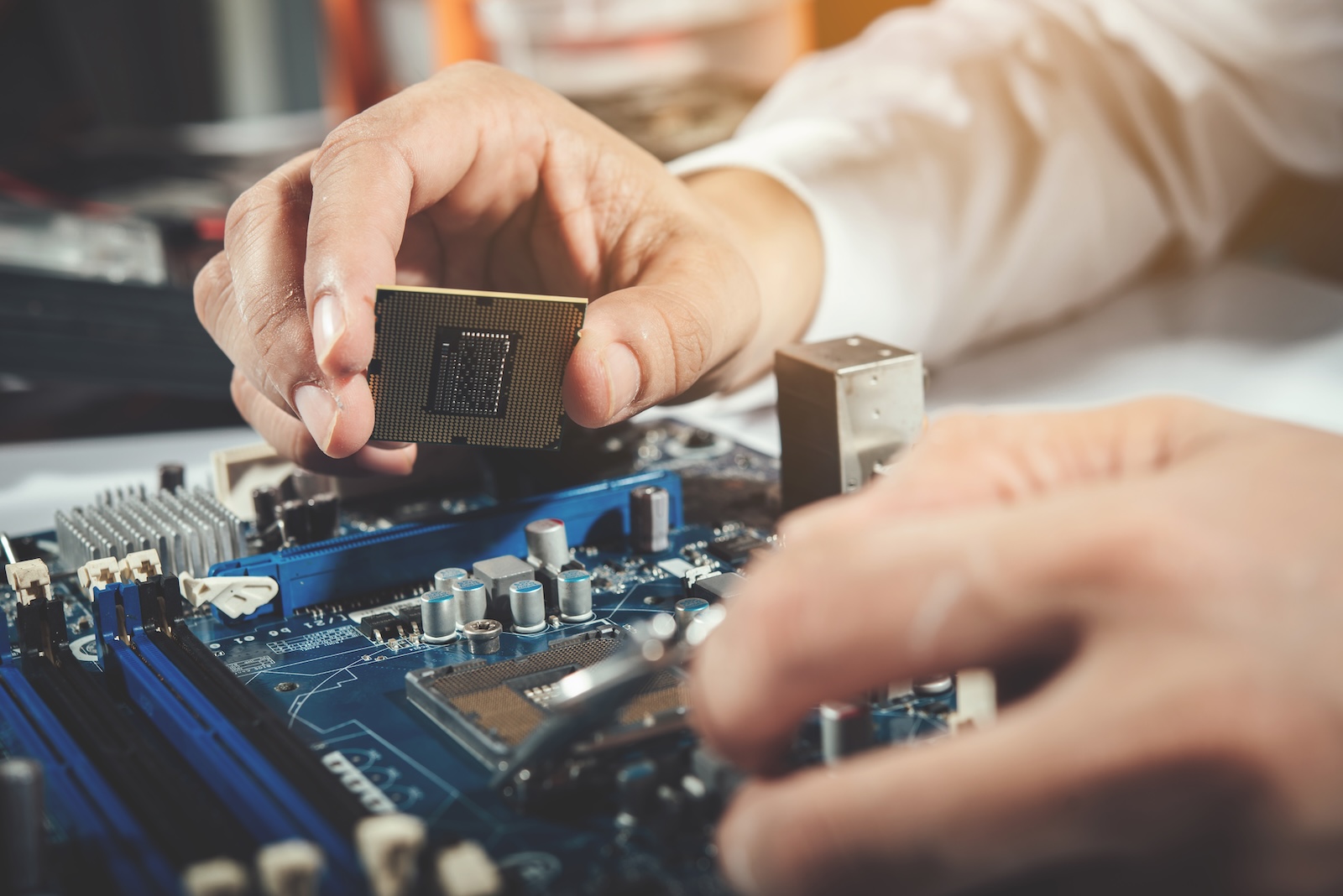In PCB manufacturing, conformal coating is a crucial step to protect electronics from moisture, chemicals, and environmental contaminants. However, despite being the final step in the production cycle, it is also one of the most delicate. One of the most common defects is the formation of “cobwebs,” also known as cobwebbing.
At Mascherpa, thanks to years of experience in electronic protection and the distribution of industrial solutions, we tackle these problems daily with a technical, problem-solving approach – particularly using DOWSIL PCB conformal coatings.

What is cobwebbing in printed circuit boards
Cobwebbing is a defect that occurs during spray application of conformal coating on PCBs. It appears as thin filaments resembling spider webs that cling to the tallest components. These filaments not only affect the aesthetic appearance but may also compromise insulation or functionality.
Cobwebbing is caused by premature drying of the coating in the air before it reaches the board surface – an issue typical of atomized spray coating and rarely seen with:
- Dip coating
- Brush application
- PCB encapsulation
Understanding its root causes is key to preventing the issue.
Main causes of cobwebbing
Several technical variables come into play when spraying conformal coatings. The main causes of cobwebbing include:
- Insufficient or missing thinner: A dense formulation can dry too early and not spread evenly.
- Overly volatile solvent: Evaporates before the coating reaches the PCB.
- Excessive atomization pressure: Causes fine misting and premature curing.
- Spray valve positioned too far: Coating dries in the air before reaching the surface.
Balancing these elements is essential to achieve both quality and productivity.
How to avoid cobwebbing during conformal coating
To prevent cobwebbing during PCB conformal coating application, focus on three critical adjustments:
- Reduce atomization pressure
- Adjust spray valve height
- Add more or slower-evaporating thinner
Reduce atomization pressure
Start by setting the atomization pressure to the lowest value. Gradually increase it only until you achieve an even spray pattern. If cobwebbing appears, the pressure is too high and must be reduced.
Adjust spray valve height
If cobwebbing persists at low pressure, the valve height may be the issue. A spray valve too far from the substrate allows the coating to evaporate mid-air. Adapt the spray head height to the PCB topography, especially over tall components.
Add more or slower thinner
If pressure and height adjustments aren’t enough, modify the formulation:
- Increase thinner percentage
- Use a slower-evaporating thinner
These changes extend drying time and reduce filament formation. Mascherpa provides tailored thinner solutions that also meet regulatory and environmental requirements.
Safety and compliance focus
Any change in solvent or thinner must consider standards like REACH and RoHS, as well as line speed and sustainability targets. Aromatic solvents offer strong performance but may face regulatory limitations.
I am text block. Click edit button to change this text. Lorem ipsum dolor sit amet, consectetur adipiscing elit. Ut elit tellus, luctus nec ullamcorper mattis, pulvinar dapibus leo.


